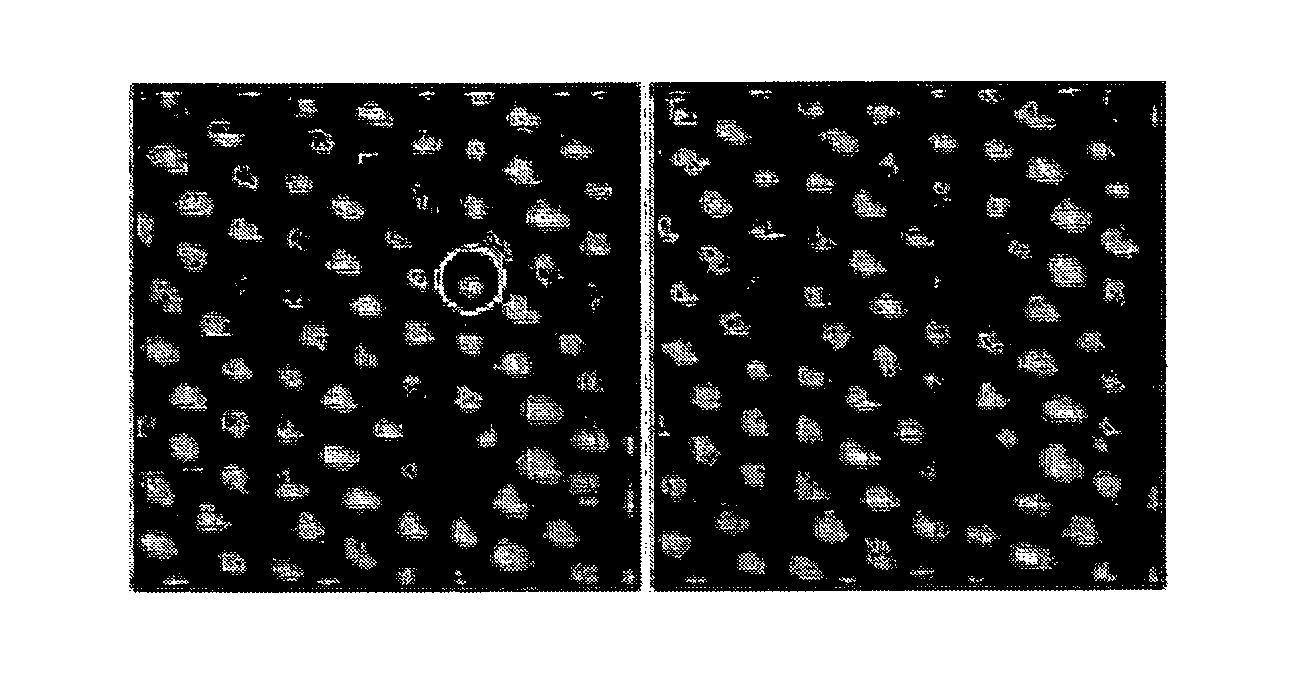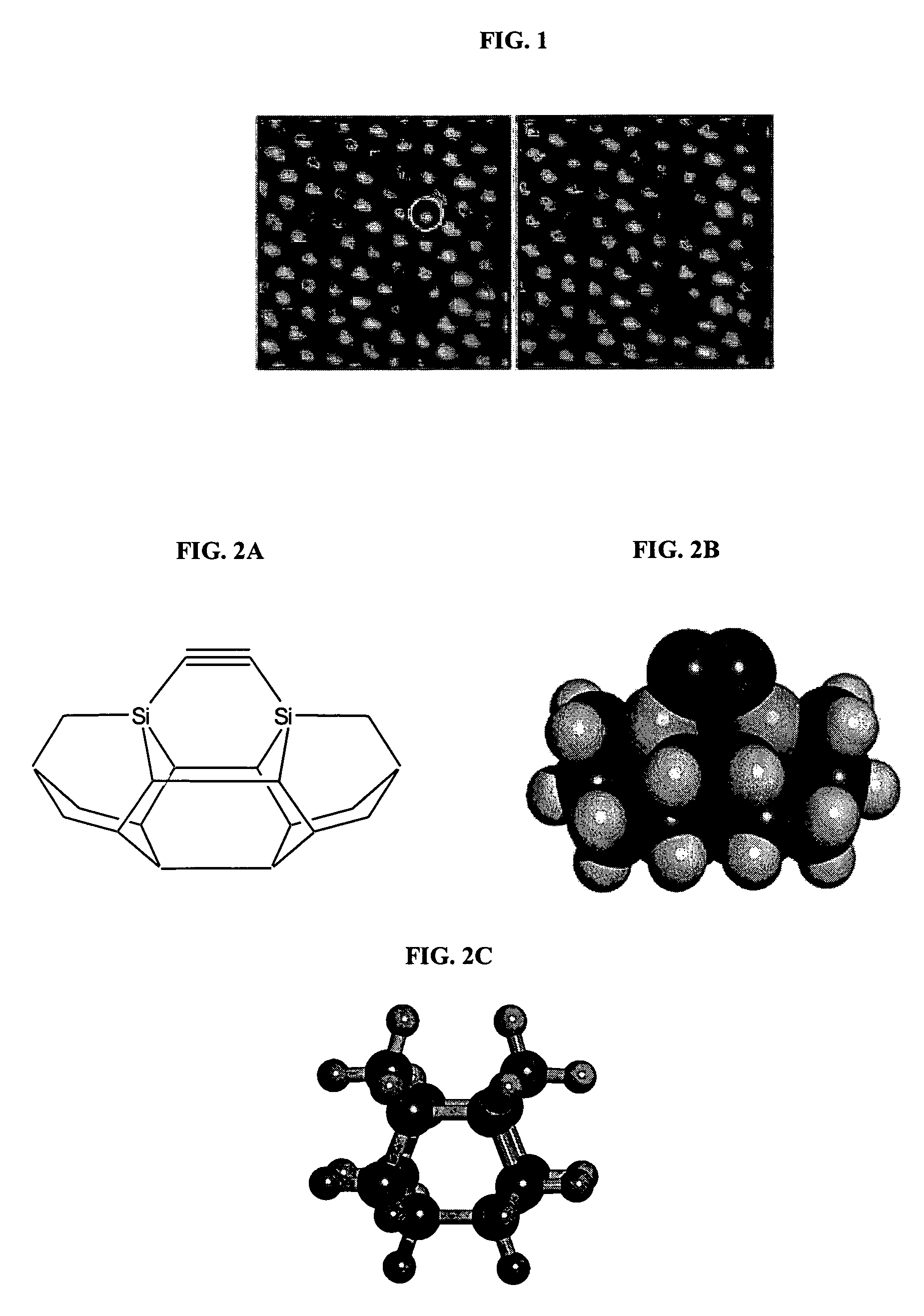Simple tool for positional diamond mechanosynthesis, and its method of manufacture
- Summary
- Abstract
- Description
- Claims
- Application Information
AI Technical Summary
Benefits of technology
Problems solved by technology
Method used
Image
Examples
example 1
Stability of C2 Mediated Growth of Nanocrystalline Diamond C(110) Surface
[0181]The present example provides an investigation of the gas-phase chemical vapor deposition growth and mechanosynthesis of clean diamond C(110) surfaces from carbon dimer precursors. A detailed atomic picture of the dimer-mediated surface chemistry during the gas-phase growth of diamond C(110) from C2 plasmas is provided, and some of the stabilized defects that can form early in the dimer-mediated diamond growth process are deduced. These results provide information regarding outcomes of the misplacement of a carbon dimer and establish constraints on the required dimer-placement positional precision that would be needed to avoid the formation of stable defects during surface growth.
[0182]Computational Methods: All calculations were performed using plane wave-based density functional theory (DFT). The software for computation was the Vienna ab initio Simulation Package (VASP) (Kresse, G., et al., Vienna Ab-in...
example 2
C2 Mediated Growth of Diamond C(110) Surface Via Si / Ge-Triadamantane Dimer Placement Tools
[0205]The present example provides a computational and theoretical investigation of the vacuum mechanosynthesis of diamond on the clean C(110) surface from carbon dimer (C2) precursors positionally constrained throughout the reaction pathway by silicon- or germanium-doped triadamantane derivatives mounted on a scanning probe tip. Interactions between the dimer placement tools and the bare diamond C(110) surface are investigated using Density Functional Theory (DFT) with generalized gradient approximation (GGA) by constructing the reaction path potential energy profiles and analyzing ab initio molecular dynamics simulations. Similar methods are applied to study the energetics and kinetics of recharging the tool with acetylene. Molecular mechanics simulations on extended tool tips are carried out to elucidate the positional uncertainty of the carbon dimer due to thermal fluctuations, and the poss...
PUM
 Login to View More
Login to View More Abstract
Description
Claims
Application Information
 Login to View More
Login to View More - R&D
- Intellectual Property
- Life Sciences
- Materials
- Tech Scout
- Unparalleled Data Quality
- Higher Quality Content
- 60% Fewer Hallucinations
Browse by: Latest US Patents, China's latest patents, Technical Efficacy Thesaurus, Application Domain, Technology Topic, Popular Technical Reports.
© 2025 PatSnap. All rights reserved.Legal|Privacy policy|Modern Slavery Act Transparency Statement|Sitemap|About US| Contact US: help@patsnap.com



